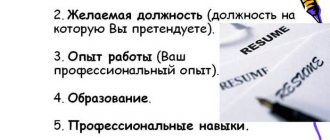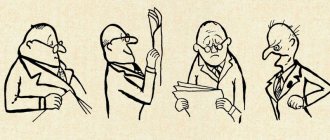The psychasthenic personality type refers to one of the types of character accentuations of A.E. Lichko. In childhood, such children are often fearful and unsure of themselves. Prone to introspection. They like to rationalize everything.
Character accentuations are aggravated character traits that form a single system of personal characteristics. A person often shows them already in childhood, but these traits usually become especially apparent in adolescence. Sometimes with age, accentuation “smoothes out” and becomes implicitly expressed. Will she disappear? Difficult question. But what was critically important for a person in childhood or puberty can lose its significance and influence on the individual with age. Sometimes one accentuation transforms into another.
Over the years of the development of psychology and psychiatry as a science, there have been many classifications of personalities. One of the well-known ones is the classification proposed by the Russian scientist A.E. Lichko. In particular, he views the psychasthenic personality as a personality type predisposed to the development of neuroses, namely obsessive-phobic ones.
In the modern classification, psychasthenia is classified as a personality disorder by two types: anancastic and anxious personality disorder. In fact, everything will depend on the specialist dealing with a specific case of psychasthenia. As a diagnosis, it is absent in the modern classifier. What was previously called psychopathy, and now a personality disorder, remains with a person for life. Some experts include neurosis (F 48.8) as psychasthenia within the framework of the existing systematization.
Definition of disorder
Medical scientists are divided in their opinion: on the one hand, psychasthenia is a neurosis that is included in the international classification of diseases by the World Health Organization. On the other hand, it is a character trait that significantly complicates life. A person with psychasthenia is overly suspicious of everything that happens to him. He is worried about the unknown and finds it difficult to make a choice even in an insignificant situation.
What psychasthenia is can be understood by translating the term from Greek - the literal translation sounds like impotence of the soul. Some consider this a lack of character. However, such people have a character and, according to the classification of personality disorders, it is called anxious-doubting or anxious-suspicious.
Attention! The psychasthenic personality type keeps its owner in constant anticipation of negative events; any situation seems potentially dangerous.
Clinical picture
On the path to success, psychasthenics are most afraid of defeat. Such people are not characterized by spontaneous, thoughtless actions. They are characterized by indecision. To avoid defeat, they carefully develop a plan of action, try to be as punctual as possible, and are distinguished by pronounced pedantry. When everything is planned in detail, a psychasthenic can work persistently and tirelessly.
Psychasthenics are very afraid of uncertainty. If something in their plan is violated, they are immediately lost and may even abandon the planned activity.
People with psychasthenia do not so much strive for success as they fear failure. They never listen to the impulses of their souls and do not commit rash acts.
In most cases, such people are well-read and educated, but they do not like speaking in front of the public or expressing their opinions. Even having a perfect command of the necessary information, if necessary, share it with others, give a speech, report, psychasthenics come into a state of extreme excitement and can forget everything.
People suffering from psychasthenia have difficulty making decisions. They listen to other people's opinions, ask for help, advice, but only from those people whom they completely trust. As a rule, their circle of communication is limited to a small number of trusted friends to whom they are attached and whose opinion they completely trust. They avoid contact with strangers so as not to embarrass themselves in front of them or be branded incompetent.
Pedantry and petty punctuality, characteristic of psychasthenia, can cause irritation among others. But punctuality and hard work, on the contrary, help them win the favor of colleagues and superiors in the workplace, but their reliability can become a reason for working overtime and completing other people’s tasks.
Increased suspicion of one’s health over time can transform into hypochondria and lead to reactive depression.
Symptoms of psychasthenic psychopathy
Obsessive-compulsive personality disorder - what is it?
The disease is diagnosed by identifying specific symptoms that can be used to distinguish it from other similar disorders:
- motor awkwardness;
- constant and deep self-analysis;
- inability to make an important decision if one of the outcomes of events may be dangerous;
- merciless self-criticism;
- lack of confidence in everything (in oneself and the situation);
- excessive conscientiousness.
Any failure that happens in reality to every person develops a feeling of inferiority. Therefore, if some action threatens the slightest failure, the psychasthenic will try to avoid this by completely refusing to participate in the dubious event. This often becomes the cause of laziness, which easily develops in a person who is afraid of making mistakes.
Diffidence
Signs of the syndrome in children
Psychasthenics, as a personality type, can be recognized starting from school years. Such children are especially slow, which is explained by a manic desire to double-check the work done several times. They are very sensitive to the teacher’s assessment, which is why they try to eliminate any shortcomings. Difficulties in the learning process are created by poorly developed mechanical memory. Creative thinking comes easier to such children.
Increased nervous excitability is sometimes noticed in older groups of kindergarten, when the child experiences the expectation of delayed parents with particular difficulty. Often there are special waiting rituals for such children, which are some kind of signs that “can speed up” the appearance of a long-awaited relative. This could be counting objects in a certain order, rocking in a chair, or rhythmic tapping. At the same time, anything that can disrupt the course of an important ritual for a child causes a sharply negative reaction.
Psychasthenia can appear at an early age
Thanks to their slowness and shyness, students with a psychasthenic personality type learn the material more easily. This is due to the fact that they are happy to try to understand the topic, take their time, study literature, think well logically, and easily systematize information in their minds. High academic performance is important to them, which they achieve with ease.
Interesting. It is impossible to notice a psychasthenic person in his social activities. The fear of responsibility and the prospect of making decisions alone for the good of the common cause give rise to horror in such students.
Main characteristics
Such individuals are overly anxious. They are worried about absolutely everything that happens or doesn’t happen to them.
They are far from sports; banal exercises can be difficult, not to mention more serious, stable training.
In this regard, their muscles are poorly developed, their endurance is low, and in general, they are often overweight due to lack of physical activity. Especially if they try to “eat up” stress, gaining an illusory sense of security.
Self-esteem is usually not true. That is, they can attribute unnecessary shortcomings to themselves and devalue their advantages. It is always underestimated, and completely unfairly.
They criticize themselves for any reason, even if there is none at all. For any external circumstances, if they lead to unpleasant consequences, they take the blame. Although in fact they have nothing to do with what happened.
This is a little annoying to others, although it is convenient. Indeed, in this case, it becomes possible to throw all the “bumps” at the psychasthenic, and he will not object.
Psychasthenics are very slow in the selection process. If he needs to make a decision, for example, which shoes to buy, he can spend hours thinking about which pair will suit him best.
It affects indecision and lack of self-confidence, the inability to listen to one’s own desires. He is more focused on whether they will laugh at him, whether they will say that his choice is terrible, and so on. Therefore, it is not easy to have a relationship with him. After all, ordinary activities will cause more trouble than they should. Not every partner is able to withstand hours of hesitation regarding which movie to go to or which restaurant to dine at.
Despite its slowness, this accentuation of character is also distinguished by impatience. It will take a painfully long time to make a decision, but as soon as he understands what to do, he will not be able to wait a single minute, and will instantly begin to turn his plans into reality. Even if he is advised not to rush into vigorous activity.
Causes of psychasthenia
A person can gain character accentuation for several reasons:
- genetic predisposition, more often passed on from father to son;
- a joyless and difficult childhood in a family where the child was not praised;
- traumatic situation.
Organic personality disorder - what is this diagnosis?
A restless parent may give birth to a child with a healthy psyche, but in order to maintain the clarity of his thinking, close and continuous communication is required among relatives who do not suffer from such neuroses. Correcting a teenager’s psychological state is much more difficult than preventing his injury, ensuring the child’s development in a healthy society.
If a newborn baby has a genetic predisposition to psychasthenic syndrome, he needs to be raised with love and respect, not forgetting to praise him every day for every new achievement. By strengthening confidence in his abilities, it will be possible to eliminate the development of increased anxiety associated with the possibility of his own failure.
Important! Any child needs to be taught from an early age that not everything will work out the first time, that losing is also useful - there will be something to work on, that his parents (as well as grandparents) once did not know everything they can now, but you can learn only by not being afraid to work on mistakes.
Having a predisposition to neurosis, a person, finding himself in certain conditions, can receive an impetus for the development of an anxious state. It is believed that severe stress, not necessarily associated with infringement of a person’s self-esteem, often becomes a starting point for a psychasthenic.
Some medical studies show that excessive mental stress in schoolchildren often becomes the root cause of the manifestation of a psychasthenic nature. Thought processes in the brain burden the fragile child's consciousness, leading to anomalies of this kind.
Responsibility and pedantry - it’s easier for them to live this way
Previously, it was these teenagers who looked after the younger children in the family. It was very easy for parents to assign this to them. Subsequently, when fewer children began to be born in families, and the characteristics of upbringing changed, such children became the object of parents’ inflated expectations. Psychasthenics, in order not to lose the love and affection of loved ones, try their best “not to lose face”; they want to meet the highest expectations of their parents, most often in their studies. They like to do soul-searching and talk about global problems of humanity.
In general, people often blame themselves for failures, rather than others. They are sluggishly happy even about their successes. They treat others fairly and are not prone to aggression or accusations. They will not foam at the mouth to prove that they are right, even if it is obvious. They do not tolerate competitive situations well. They do not strive for leadership. But they themselves want to be “correct” in everything. They love routine and do not tolerate change well. They are prone to pedantry, but only because it is difficult for them to get used to new things. It is easier for them to maintain order than to arrange everything anew.
If we talk about sports, then it’s more complicated. Teenagers with psychasthenic accentuation are most often awkward in their movements, they have weak arms, but strong legs, they are successful in running and jumping. In activities that require excellent development of fine motor skills, they do not show high results. They are not prone to delinquent behavior; they rarely become addicted to alcohol or drugs. They also do not show suicidal intentions.
Psychasthenic accentuation of character is an extreme variant of the norm. But there is also psychopathy or personality disorder of the psychasthenic type. Here we are already talking about a deeper change in personality. Interfering with the normal adaptation of the individual to the world around him.
Prevention of the disorder
Personality disorder - what is this diagnosis?
You can independently raise a child who has a genetic predisposition to neuroses by providing him with a healthy lifestyle, both individually and in a group:
- an active start to the day, giving healthy physical development to the body;
- team games in a permanent group;
- focusing adults’ attention on successes of varying significance;
- Minimizing alone time with aggressive or restless relatives.
Team games
Attention! Team games teach you to feel your importance in a team, notice the mistakes of other team members, and also demonstrate the essence of friendly support.
Diet therapy for astheno-neurotic syndrome
Diet for asthenia. Diet therapy or therapeutic nutrition is a method of assistance in which the quantity and quality of nutrition influence the mechanisms of development of a disease state. The diet for asthenic disorders depends on the general condition and the presence of concomitant diseases. The main features of diet therapy for asthenia: increased content of vitamin and protein-containing foods in the diet. Sometimes, a type of diet therapy such as fasting can be used as part of a treatment complex.
With asthenia, diet therapy cannot be the main method of treating asthenia, only an auxiliary one.
Therapeutic exercise for astheno-neurotic syndrome
Physical exercises in the treatment of asthenia often have a very significant weight. Despite the apparent weakness of patients in an asthenic state, it has been noted that some types of physical activity have a high therapeutic effect on the severity of symptoms. The most common types of physical therapy for the treatment of asthenia are athletics and water sports.
Although physical therapy is indicated for all types of asthenia, unfortunately, in practice doctors rarely prescribe it.
Occupational therapy for asthenic disorders
Restoring the nervous system through work is a common method of treating many mental and behavioral disorders. For asthenic conditions, work with a predominance of moderate and regular physical activity over intellectual activity is recommended.
Occupational therapy is an optional method of treating asthenia, and in some cases it may have contraindications.
Forms of psychasthenia
Depending on the cause that gave rise to the manifestation of the pathology, the psychology of the disease can be expressed in two different variations: obsessive-compulsive disorder or anxiety disorder.
Anancastic personality disorder
Anancastic disorder, or known in the International Classification of Diseases as obsessive-compulsive disorder, is characterized by an increased tendency to doubt and perfectionism. Obsession is restless thoughts that disturb the patient, the psychology of which at first glance is not clear to the interlocutors. People with this disorder are absolutely rigid, that is, they are unable to accept compromise and are completely unshakable in their opinions.
Compulsivity for a psychasthenic is an effective way to control the situation, while at the same time keeping oneself in a state of relative peace of mind. An example is the counting of objects that has become a ritual, or a special rhythmic knock that the patient is forced to perform at a certain point in time, as it seems to him.
Avoidant personality disorder
This form of psychasthenia makes a person want to isolate himself from society, so as not to allow a single chance for those around him to somehow criticize or ridicule him. Excessive sensitivity to outside opinions interferes with healthy communication and gives the right to consider oneself unattractive and unable to become a full-fledged member of society.
Part I
Chapter 4. Psychasthenic character
1. Core of character
Psychasthenic (mentally weak, translated from Greek.
) are characterized by initial anxiety, weak repression, defensiveness, depersonalization with faded sensuality, analyticalness, and realistic worldview.
Initial (basal) anxiety and weak repression.
For a psychasthenic, life is full of dangers. He feels them not abstractly - vaguely, like most people, but with a keen experience that sooner or later they will happen or have already happened, only he does not know it yet. A psychasthenic lives as if he were walking through a minefield. To many, this attitude to life seems wrong. But the truth of the psychasthenic is that the world is indeed full of dangers. Of course, he understands that, in addition to dangers, there is light and joy. But an alarming logic takes over: if the danger is not detected and neutralized in time, then the light and joy will disappear - therefore, you need to think about the danger. This anxiety is primordial, no one instilled it in the psychasthenic, it lives in the depths of his being. It is basal, as it arises from the experience of the fragility of human existence.
Why don't most people suffer in this way? They are helped by trust in existence, fate, life, and faith in God. Many people repress basal anxiety. The psychasthenic has very weak repression
in this regard. He is afraid not to think about terrible things.
Initial (basal) anxiety is characteristic of asthenics and anancastes, but they are more capable of displacing it. This anxiety is expressed not only in distrust of the natural course of events, but is also manifested by very specific phenomena. For asthenics it is predominantly anxious suspiciousness, for psychasthenics it is doubts, for anancastes it is obsessions. All these phenomena are connected by one theme - something bad can happen. Basal anxiety also occurs in people of other characters, especially schizophrenic people and cycloids.
The psychasthenic character is related to the asthenic one, but is a more complex characterological ensemble. Defensiveness described in the chapter on asthenics
with the conflict of vulnerable pride and feelings of inferiority is fully inherent in psychasthenics. But unlike the asthenic, the psychasthenic analyzes in detail the internal defensive conflict and its external manifestations.
Depersonalization
(the feeling of one’s emotional alteration) in a psychasthenic is of a mild nature. Its essence is that in a situation of stress, a psychasthenic’s feelings seem to turn off, “numb”, while their thinking remains clear, and the ability to act intelligently is preserved. This explains why timid psychasthenics performed military feats and confidently and collectedly answered the exam after a sleepless night. Due to the same mental numbness, they do not feel acute grief at the funeral. A psychasthenic person may be desperately afraid of some event all his life, for example, a fatal illness, but when this event occurs, depersonalization turns on, and he meets it steadfastly and even courageously.
However, in everyday life, under minor stress, mental numbness does a disservice to the psychasthenic. Every time you need to somehow identify your feelings, they slip away, and the psychasthenic gets lost. Without a “compass of feelings” it is not clear what to say in a given situation; natural, relaxed, spontaneous behavior is impossible. You have to artificially build the “correct” behavior, while simultaneously analyzing whether it works out well. At the same time, the psychasthenic is anxiously tense and constrained. Inside he has uncertainty, confusion: what to say, how to answer. Sometimes, as luck would have it, in the absence of adequate feelings, completely inappropriate thoughts and experiences come; They need to be tracked in time and not allowed to escape. In this state, a psychasthenic person may make some kind of blunder and immediately try to correct it, involuntarily straining and causing reciprocal tension in the interlocutor. In such a state, the clumsy jokes of the psychasthenic, instead of smoothing out the awkwardness, only intensify it.
Trying to “turn on” living feelings, the psychasthenic tries with his thoughts to more clearly indicate the essence of the situation, the nature of the relationship. Instead of the joy of communication, an unnatural strain arises in the soul. For the sake of the interlocutor, feelings have to be portrayed a little. Sometimes a psychasthenic person interprets his inability to experience feelings and adequate situations as a gross pathology and in vain suffers from worries about his non-existent schizophrenia.
But then the psychasthenic remains alone in the evening in the calm comfort of his room, and everything in his soul thaws. Then living feelings come into play, and a full response to everything that happened during the day arises. You feel joy from meeting an interesting person or are overwhelmed by acute mental pain when remembering a funeral. The psychasthenic is annoyed that these feelings came late, that they were not able to express them at the right moment. However, it should be noted that even in these moments of complete calm, the psychasthenic may lack confidence in the accuracy of his feelings.
If it were customary to express his feelings not at the moment of interaction, but after some time in a letter, it would be easier for him. Sometimes he himself discovers that he can express himself more fully in letters. The psychasthenic begins to tune himself to the fact that next time he will be natural, will say sincere words from the heart, when necessary, will hug the person, express true sympathy. However, the next day comes and with it again an anxious tension about unnatural, numb feelings; However, some of what was planned is being accomplished.
Knowing his peculiarity, the psychasthenic tries to think through the situation in advance, write key points in a notebook - all this so that his words and actions are more accurate and adequate. In a situation for which, in his opinion, he is ready, the psychasthenic experiences less stress, therefore, less numbness and more spontaneity. After all, he communicates without pronounced depersonalization with friends and family.
Faded sensuality
or, as psychophysiologists put it, the weakness of the “animal half”, or the “withered subcortex”, is integral to this character. The subcortex is an area of the brain located beneath the cerebral cortex. The ability of the senses to perceive the world around them clearly, tenaciously, accurately and with pleasure depends on its functioning. In a psychasthenic, the work of thought, that is, the activity of the cerebral cortex, prevails over the activity of the subcortical areas of the brain. This explanation by I.P. Pavlov well and simply describes the physiological prerequisites for the faded sensuality of a psychasthenic with a simultaneous compensatory dominance of mental work. I. P. Pavlov called a similar phenomenon “secondary signaling”; the psychasthenic is precisely “second-signal”.
Faded sensuality is specifically expressed in the fact that the immediate joys of life - the enjoyment of fine gastronomic cuisine, the muscular joy of playing sports, the pleasure of walking barefoot on wet grass, etc. - are perceived by the psychasthenic more muted than by people of other characters. A psychasthenic lacks natural coordination of movements, dexterity, eye, and natural instinct. His mechanical memory is rather weak, he does not have an absolute ear for music, and lacks richness and brightness of colors in his perception of the world. After talking with a person for an hour, the psychasthenic finds it difficult to describe the details of the interlocutor’s clothing, the color of his hair, and cannot confidently remember specific phrases and expressions. But he remembers well the general meaning and tone of the conversation.
Due to the same faded sensuality, there is no relief, stable imprint of the event that just happened in his memory. So he suffers and double-checks, for the umpteenth time, whether he closed the door and turned off the gas before leaving the house. This is not an obsession, since he actually cannot convincingly reproduce in his memory the moment of slamming the door, turning off the gas. And you have to repeat these actions until a clear memory-sensation arises: yes, the gas is turned off.
These checks are partly justified, because the absent-minded psychasthenic sometimes sometimes forgets to turn off the gas or close the door: the checks are compensation for his absent-mindedness. Thus, we see two reasons for a psychasthenic’s lack of confidence in his own feelings: depersonalization and weak sensuality. It should be noted that depersonalization and faded sensuality inseparably complement each other: faded feelings are more easily numb, and numb feelings become more faded. A psychasthenic compensates for his insecurity by being overly analytical.
Analyticity
psychasthenics are reflexive.
Reflection
is the ability to detachly evaluate one’s experiences, as if losing oneself and observing oneself from the outside. Reflexivity is a property of abstract, highly organized thinking. Interestingly, P. B. Gannushkin described the so-called “triple self” of the psychasthenic with humor: “his first self feels fear; the second “I”, not wanting to reveal my mental state to others, disguises this fear and tries - often successfully - to hide my excitement and be calm; finally, the third “I” watches the first two, and sometimes laughs at them” (Gannushkin, 1907: 438).
Depersonalization, faded sensuality, weak repression contribute to reflexive analyticity, since thought, without being intoxicated by the bright colors of impressions, captures the soul, intertwining itself in painful self-analysis. As S.I. Konstorum put it, a psychasthenic “travels 80 thousand leagues around his person” (Konstorum, 1935). In case of failures, the psychasthenic is little able to think about himself neutrally or well, and these “80 thousand leagues” turn into 80 thousand self-flagellation. One of the reasons for this is that failures actualize the psychasthenic feeling of inferiority in all its details, which the vulnerable self-esteem of the psychasthenic cannot come to terms with and painfully punishes him. Self-analysis and self-criticism are often not liked by psychasthenics themselves, since it does not bring them to light and only lowers their self-esteem even more. Another person would give up this painful occupation, but a psychasthenic certainly needs to find out what kind of person he is and what he is worth. He is unable to force this unpleasant clarification out of his consciousness. At the same time, he judges himself too strictly (the standards are set by vulnerable pride and hypertrophied conscientiousness).
Indecision, and therefore the difficulty of acting confidently, also plunges the psychasthenic into painful reflection, according to the principle “measure seven times, cut once.” Let us remember Hamlet, whose image is interpreted in different ways: from an epoch-making intellectual to a cold egoist, philosophizing where it is not appropriate. Regardless of these opinions, one thing is clear: if Hamlet had killed his enemy without delay, there would not have been a great play. The whole point of the play is deep reflection. Hamlet says: “Thus thinking makes us cowards.” The opposite idea is also interesting: cowardice (indecisiveness) tends to lead to anxious thinking. Both of these thoughts are true in relation to a psychasthenic.
Doubt
- a typical feature of psychasthenic analyticity. Doubt is a meeting, a struggle of several opinions, a logical work of the mind. It is possible only in a situation of uncertainty. When a psychasthenic doubts, it means that he is not sure of either the bad or the good. If a psychasthenic sees some kind of significant threat in uncertainty, then he constantly thinks about it. It is almost impossible for him not to think in this situation, especially if we are talking about something important. It happens that doubt spins and spins within itself, not moving forward and unable to stop. It can work idly for an exhaustingly long time until suddenly it is illuminated with understanding. Or gradually, almost imperceptibly for oneself, the screw of doubt enters deeper and deeper into the question being studied, finally reaching the answer. Psychasthenic doubt is the ability to seek out unpleasant uncertainty and transform it into pleasing clarity.
There are typical thoughts that torment a psychasthenic: the question of death and dangerous diseases leading to it; shame in general and shameful diseases in particular; madness; well-being of yourself and your loved ones; difficulties of interpersonal relationships; meaning of life; moral duty. Thus, a psychasthenic does not worry about everything in the world, for example, about non-dangerous diseases or minor everyday troubles. He generally saves his attention from many things. Otherwise, he would simply collapse from the abundance of experiences. The main doubts of a psychasthenic are concentrated in the moral, ethical and hypochondriacal areas. Hypochondria is worries about an imaginary, non-existent illness in a person. If the disease actually exists, but is overly experienced, then they talk about hypochondriacal layers.
Psychasthenic doubts are not absurd or illogical, they are always realistic: that is, what the psychasthenic is afraid of can really happen. Another thing is that a psychasthenic exaggerates the degree of danger, the likelihood of trouble. But this also has its own logic. For example, a psychasthenic is told that thousands of people fly by plane, and only a small percentage die in plane crashes. He agrees, but adds: “What if I end up in that small percentage?”
True obsession differs from doubt in that a person perceives its content as complete absurdity. A psychasthenic person in childhood and adolescence can be seriously tormented by obsessions, but with age, as their character develops, they are increasingly replaced by doubts.
The structure of the anxious doubt of a psychasthenic psychopath is often as follows: there is 1% of trouble against 99% of well-being, the bet is made on this 1%, and it is perceived, say, as 30% or 90%. Therefore, the one percent “what if?” can drive a psychopath to panic. This exaggerated “what if” is the sting of anxious doubt. For peace of mind, a psychasthenic needs that no “what if” arises.
Doubts do not allow the psychasthenic to be convinced where most people in his place would have long ago come to a decision. For example, he may doubt for a long time the reality of his wife’s betrayal, despite the fact that everyone is sure of it. And the root of the doubt here is not in his optimism, of which there is little, but in the alarming seriousness: if you put an end to it, break off the relationship, what if your wife didn’t cheat? Such rashness is terrible, and the psychasthenic walks in circles of doubt.
Realism
thinking and feeling is manifested, first of all, in a tendency towards a realistic worldview, the essence of which, according to M.E. Burno (Burno, 1998: 8), is that a person perceives his body as the source of his spirit. The psychasthenic does not feel that the soul exists initially, outside his bodily organism, on its own, coming to him from the eternal spiritual Source. He feels that his spiritual life is born in the depths of his body. Such realism is characteristic of psychasthenics, asthenics, cycloids, epileptoids, and, with certain reservations, also of infantile-juvenile people. In this regard, we need to speak especially about people of other characters. This is not about a worldview, but about a sense of the deep-intuitive relationship between one’s soul and the world. Worldview and attitude may not coincide; Especially often, hysterics and cycloids think what they want to think at a given time, and not what they deeply feel inside themselves.
The realism of a psychasthenic is also manifested by the fact that he is absorbed in thinking about earthly problems, and not in abstract, philosophical, mystical constructions. His thinking is based on facts, checks them in its complex analyticity, and respects experience and the truth of life. Thanks to the complex work of doubt, an intelligent psychasthenic sees the world deeply and simply in an earthly way. He does not feel with his soul, like a schizoid, the true reality of the infinite, primordial Spirit ruling the world. A person of a psychasthenic character, albeit uncertainly and doubtingly, walks on the earth, appreciating the warmth and beauty of its materiality.
So, inseparably from each other, the core of the psychasthenic character includes:
1.
Initial (basal) anxiety with weak repression.
2.
Defensiveness with a conflict between vulnerable pride and feelings of inferiority.
3.
Depersonalization with faded sensuality.
4. Reflexive analyticity with a tendency to anxious doubts.
5. Realistic attitude.
To summarize: a psychasthenic is characterized by a realistic worldview, but unlike other realists, his initial anxiety, without being repressed, being refracted by defensiveness, depersonalization, analyticality and realism, is transformed into anxious doubts, primarily of an ethical and hypochondriacal nature, and into anxious uncertainty about adequacy your feelings. Analyticity plays a compensatory role in relation to depersonalization and faded sensuality. A similar mechanism is observed in psychasthenic-like schizophrenia. Let me emphasize, therefore, that a psychasthenic does not have a splitting (schisis - we will talk about it later) of mental activity. The psychasthenic character represents a psychologically understandable integrity.
Let us briefly highlight the history of understanding the psychasthenic character. The scientific study of psychasthenia was initiated by the studies of P. Janet (Janet, 1911) and F. Raymond (Raymond, 1910). Understanding it broadly, P. Janet considered the main disorder of psychasthenia to be a decrease in mental tension, due to which the “function of the real” suffers, a feeling of incompleteness and uncertainty in one’s mental processes arises (depersonalization in the modern sense). From this, according to Zhana, all the other features of the psychasthenic psyche follow: indecision, “mental chewing gum,” self-doubt, a tendency to obsessive states. At the same time, the clinical descriptions of Raymond and Janet included a collective group of at least ten different conditions.
S. A. Sukhanov (Sukhanov, 1912) understood psychasthenia narrower than Janet and Raymond, excluding from it painful desires, epileptic and organic conditions. S. A. Sukhanov identified an “anxious-suspicious” character, which he identified with psychasthenic. However, his descriptions contained a wide range of psychasthenic-like states, including anankastic and schizophrenic. In addition, Sukhanov, like Janet and Raymond, considered true obsessions to be the main psychasthenic disorder. T.I. Yudin distinguished Kretschmer’s sensitive schizoids from psychasthenics, while psychasthenics and anankastes remained undivided in him (Yudin, 1926).
The next important step belonged to P.B. Gannushkin (Gannushkin, 1998, 1907, 1964), who drew attention to the phenomenon described in 1902 by the Prague psychiatrist A. Pick and called it psychasthenic doubt. It was precisely the tendency to doubt, and not to obsessions, that P. B. Gannushkin considered one of the main traits of a psychasthenic. In his descriptions, the psychasthenic character is presented as an integral ensemble, a spiritual pattern (the second important contribution of P. B. Gannushkin). He also distinguished psychasthenics from asthenics and neurasthenics and, most importantly, from schizophrenic conditions. He showed that a psychasthenic with a difficult character is a congenital psychopath. However, in his works on psychasthenics there is no clear description of depersonalization. I. P. Pavlov described the “secondary signal” and sensory dullness of psychasthenics, explaining by this their motor awkwardness, lack of a sense of the real, unnaturalness, feeling of incompleteness of life, rationality (Pavlov, 1949).
Kurt Schneider (Schneider, 1940) described psychasthenics, in our understanding, much more sparingly than P. B. Gannushkin. In English and German psychiatry, descriptions of anankastic and obsessive-compulsive states predominate (Kaplan, Sadok, 1994; Mayer-Gross, Slater, Roth, 1960; American Handbook..., 1967; Weitbrecht, 1968; Kahn, 1928; Bergmann, 1961). Perhaps this is due to the fact that in Russia there are more psychasthenics, and in the West there are more anankastes. In addition, the works of P. B. Gannushkin are little known abroad.
In our time, the psychasthenic character was studied in detail by M. E. Burno, who, summing up the experience of previous scientists, formulated the core of this character. Its essence, according to M.E. Burno, is “determined by natural, primordial anxiety-defensiveness, coupled with sensual witheredness and dullness and the dominance of realistic analytical work of thought, an anxious and painful uncertainty in one’s rather realistic-earthly feelings” (Burno, 1998: 24).
Like asthenics, psychasthenics are characterized by irritable weakness with vegetative instability, impressionability, fatigue, and an overcompensation reaction. However, in psychasthenics these features are usually less pronounced than in asthenics. Asthenics and psychasthenics are related characters
and, in essence, belong to one, asthenic group in the broad sense. The difference is that asthenics have a fairly acute sensuality and they do not have depersonalization and hypertrophied analyticity.
Many people are clearly diagnosed as either asthenics or psychasthenics. There is also a transitional part of the spectrum, when it can be said about a person that he is more likely to be asthenic than psychasthenic, and vice versa. Due to this relationship, much of what was described in the chapter on the asthenic character is also applicable to the psychasthenic, so it will not be described a second time. Only a few moments that are especially noteworthy for a psychasthenic will be repeated.
2. Features of the manifestation of character in childhood and adolescence
Already a psychasthenic child has more anxiety than other children. Precisely anxiety, not fear. Fear is the immediate experience of danger at the moment of encountering it, and anxiety is the painful anticipation of danger in the future. In this sense, animals have a lot of fear, but little anxiety. A psychasthenic child becomes anxious, for example, when his mother is not at home, his imagination draws pictures of all sorts of misfortunes. Even if it turns out that his mother was late to buy him a gift, he is offended by her and is not happy about the gift.
Since anxiety is associated with danger that may yet happen, it is quite natural for defenses to arise. Such protection can be real (for example, washing dirty hands in case of fear of getting infected) or ritual-symbolic, if there is no reliable real method of protection. G. E. Sukhareva (Sukhareva, 1959: 291) and other child psychiatrists noted protective rituals and “amulets” among psychasthenics (especially often in adolescence). Their manifestations are varied (tapping, omens, counting objects, etc.), but the meaning is the same - so that nothing bad happens.
Studying in the lower grades is difficult, since the main burden falls on memory, the ability to be accurate, and the rapid mechanical acquisition of skills. Psychasthenics are characterized by constant self-control, endless double-checks, and slowness - in connection with this, they may not have time to cope with the test during the lesson. During reports and public speaking, they are concerned about how others evaluate them. Public speaking is often difficult or impossible. They strive for order in their studies, but lack of discipline does not allow them to create the order that causes them irritation. They are very worried about their performance. They should not be harshly scolded for poor grades, as this creates fear of failure and makes it difficult to study. If a teacher treats such a student kindly and encourages him when necessary, then this has a positive effect on academic performance.
In high school, where analytical skills are required, psychasthenics begin to study better and often creatively. Unable to mechanically memorize the material, they are forced to thoroughly understand it logically. Getting to the point with their minds, they are able to clearly explain the subject they are studying to other children in their own words, thereby gaining popularity among their classmates. At the institute, their academic performance increases even more thanks to the ability to logically generalize and think, albeit slowly, but deeply in their own way, with a desire to delve into the essence of their favorite subjects. The analytical talent of a psychasthenic is often revealed in its entirety already in adulthood.
School social work is not easy for them, as they are afraid of responsibility and decisions associated with uncertainty and risk. They slowly become friends with friends, looking for those who do not hurt their vulnerability. Due to motor awkwardness, physical education and labor lessons are difficult. A.E. Lichko points out (Lichko, 1985: 50) that psychasthenics are better at those sports where the load falls on the legs. Due to the fact that they do not like and do not know how to fight, they develop caution, the ability to avoid conflicts, and give in. Usually they don’t know how to meet and care for girls, they are ashamed to show their love.
Despite the above, a psychasthenic teenager and, especially, a child does not show the alarming psychasthenic integrity of an adult. At times, a child can flippantly give up on something, rely on chance, push out trouble. In childhood, a psychasthenic has a more “juicy subcortex” than in older age. He is more capable of direct joy of life, unencumbered by introspection. And life itself under the wing of parents seems more joyful and safer. A psychasthenic child simply does not know about many dangers and therefore worries less.
The greatest load on the psychasthenic character falls in youth, when it develops into a system. Firstly, a psychasthenic person goes out from the narrow circle of school and family into the wide world, where it is necessary to make quick and serious independent decisions. Secondly, the more a psychasthenic learns about life, the more he learns about the dangers, and the more reasons for anxiety arise. The world is bristling with new, hitherto unknown dangers. Thirdly, reflection, which intensifies in youth against the background of fading sensuality (in comparison with childhood), often increases indecision, shyness, and communication difficulties.
In his youth, even a realistic psychasthenic encounters flashes of philosophical horror. For example, his mind cannot accommodate the idea that there are no boundaries of the universe. Sometimes a psychasthenic has a crisis in life at the thought of being doomed to death, which may appear unexpectedly early. Any undertakings seem pointless, since you will die anyway, and then why do everything? Purposeful activity is based on the implicit belief that the goal will be achieved, but where do you get this faith if you don’t know whether you will be alive tomorrow? A young psychasthenic mentally understands the inevitability of death, but with his soul he cannot accept that he, so alive and real, will not exist. The most severe hypochondria is observed in psychasthenic youth. E. Fromm is right (Fromm, 1971), “that dying is always hard, and having not lived life, it’s even harder.”
3. Variants of a psychasthenic nature
Clinical variants of psychasthenics were practically not distinguished. It is permissible to distinguish psychasthenics by various “layers” on the main core of character.
Psychasthenics are outwardly sociable, mentally warm, that is, cycloid-like. They may be schizoid-like, and then they have an increased interest in autistic creativity. They love to bring their thoughts to logical completion; due to their sensitivity, it is especially difficult for them to let people into their souls. Epileptoid-like psychasthenics are outwardly tense (but without dysphoric coloring) and seem to be authoritarian, not simple in their relationships with people, envious and proud (due to an inferiority complex, and not a craving for power). Psychasthenics with juvenile qualities are distinguished by external enthusiasm, a certain spontaneity, and a romantic flight in the soul. They seem to “get drunk” from their anxieties and therefore respond to dissuasion therapy more difficult than other, more rational psychasthenics. For some psychasthenics, disturbing formalism is related to anancastism. A number of hysterical psychasthenics are very fond of praise and applause, while being embarrassed by them, remaining painfully self-critical in the face of failures.
These divisions by type of similarity are arbitrary, since a particular psychasthenic can be “many-similar,” revealing his different facets in different situations. There are also “textbook” psychasthenics, in which the core is presented almost in its pure form, practically without “stratifications”.
Among psychasthenics there are spiritual people with creative, interesting doubts, and there are also primitive ones who torment their relatives with ethical doubts such as giving five or fifteen rubles to the postman who brought the telegram.
How to diagnose the disease
Diagnosis of the disease occurs through examination and testing of the patient in order to detect serious deviations of emotional reactions from the norm accepted in a given culture. At the same time, the adequacy of the perception of the concepts “I” and “others” is necessarily assessed.
Additional Information. The diagnosis itself involves identifying a lack of flexibility in reactions, which is the cause of constant emotional stress that interferes with adaptability in society.
A detailed examination of the brain is required, during which the quality of brain activity is assessed. It is important to identify the presence of physical injuries, which often become the causes of the development of hysterical behavior of the individual.
Studying the quality of blood supply to all areas of the brain is necessary to exclude vascular dystonia from the list of causes of neurosis.
Drug treatment of asthenia
Drug therapy is of greatest importance in the treatment of asthenia or astheno-neurotic syndrome. Exhaustion requires additional third-party support, the supply of missing nutrients to the nervous tissue. The list of medications possible for the treatment of asthenia is quite large and requires special attention when prescribing them.
Universal pharmacological methods include neurometabolic therapy (a combination of B vitamins, nootropic, vascular, dehydration and amino acid agents). Neurometabolic therapy, in addition to its pronounced therapeutic effect, is also an effective means of preventing the formation of asthenia. Courses of neurometabolic therapy are used before overload, before upcoming planned stress. For persons whom doctors consider to be at risk for the development of asthenic conditions, courses of neurometabolic therapy are carried out twice a year (usually in spring and autumn). It is not uncommon that, at the doctor’s discretion, only some components of neurometabolic treatment are used, for example, only vitamins or nootropic drugs.
To treat astheno-neurotic syndrome, drugs from the group of neuroleptics, antidepressants and mood stabilizers can be used. They are resorted to in cases where the doctor sees biological changes (disturbances in the neurotransmitter systems of the brain).
Drug treatment of asthenia, like physical therapy, is not a mandatory method of treating asthenic disorders. Only after an in-person examination by a doctor, a decision is made about the need to use pharmaceutical therapy for asthenic conditions. Drug therapy is mandatory in the treatment of asthenia, but it should be moderately reasonable.
Light therapy
Light therapy is used in cases where the symptoms of asthenia and neurotic symptoms are caused by seasonal affective reactions, or when the asthenic disorder is complicated by depressive conditions. During light therapy, the patient is in a special room illuminated by lamps with specially selected characteristics. Light therapy courses can last several tens of days. Light therapy is an optional method of treating asthenoneurotic syndrome.
Treatment of asthenia with rehabilitation programs
Some experts, traditionally, classify rehabilitation therapy for astheno-neurotic syndrome as a type of psychotherapy, however, in this method of treating astheno-neurotic syndrome, in addition to psychotherapeutic mechanisms, sensory receptors (smell, tactile sensations, perception, etc.) begin to work. climatic, physical, social and other factors. Therefore, travel therapy is often recommended for rehabilitation and is even considered a separate method for treating asthenic and neurotic conditions.
Only a doctor has the right to send a person on a trip in an asthenic or astheno-neurotic state, having assessed the benefits and risks of this method in each specific case.
Treatment options and possible complications
After a diagnosis of “psychasthenia” is made, treatment can be carried out in several ways, depending on the degree of neglect of the disease and the reasons that provoke it:
- when disturbances in the functioning of the cerebral vessels are detected, the first step is to restore their elasticity and increase patency;
- the consequences of injuries to the skull bones that had an impact on internal tissues, on the recommendation of a qualified specialist, are eliminated as far as possible;
- a practicing psychologist (in some cases a psychiatrist) develops an individual course of adaptive work with the patient;
- if psychological therapy is insufficient, sedatives of plant or synthetic origin are used to suppress negative outbursts of emotions and relieve anxiety.
Brain examination - encephalogram
Patients with psychasthenia are among the most difficult even for a qualified psychologist. In order to begin to effectively treat mental weakness, the specialist needs to win over the client and make him believe that he can be trusted. While it was precisely the lack of the ability to relax in the company of a stranger that brought the patient to the appointment.
Do I have asthenia?
- Signs of asthenia, is it a disease?
- Can asthenia be a normal variant?
- Is this a temporary and reversible condition?
- If there are signs of asthenia, do you need medical help?
- Is it possible to avoid the disease?
- What symptoms are included in this category?
The answers to these questions have been prepared for you by our doctors. Let's start with how this condition manifests itself.
Primary signs of asthenia
- Fatigue, weakness
- Irritability, feeling dissatisfied with others
- Decreased health
- Various sexual disorders, breakdowns, etc.
- Exhausted attention with excessive specificity
- Tearfulness, increased sentimentality.
- Sleep disorders (insomnia at night, drowsiness during the day).
- Poor tolerance to loud sounds, bright lights, strong odors.
- Headache.
- Nervousness.
- Feeling of inner trembling.
- Poor appetite.
- Excessive worry about unimportant reasons.
- Difficulty in making decisions.
- Thoughts are easily lost and it is difficult to concentrate.
- Autonomic symptoms: palpitations, sweating, shortness of breath, trembling, trembling sensation.
- Unpleasant sensations in different parts of the body that can change and “migrate”.
Course of asthenia
The course of astheno-neurotic syndrome or asthenia is often associated with possible complications that accumulate and develop due to the duration of this pathological process. Therefore, doctors strongly recommend not to delay treatment of asthenia or treatment of astheno-neurotic syndrome. An exhausted nervous system is easily susceptible to the formation of a wide variety of pathologies of the mental spectrum of diseases.
Despite the fact that the prognosis for the treatment of asthenia or treatment of astheno-neurotic syndrome in the vast majority of cases has a favorable prognosis, the duration of therapy can be quite long and depends on both the depth of the disorder and the duration of its course.
Asthenia can occur in the form of attacks, with complete recovery during periods of calm. However, more often the asthenic state is characterized by a constant (often with intensification in the evening), “as a background” and long-term course.











